117 Search Results for: Quaile
Can UN and EU take the heat off Alaska?
It is with a heavy heart that I write this first blog post since my holiday, catching up with the latest climate news. A piece by Alex Kirby of Climate News Network drews my attention to the fact that temperatures in Barrow, Alaska, one of the first places to feature on the Ice Blog when it was created in 2008, have risen by an astonishing 7°C in the last 34 years (looking at the average October temperature). As Alex Kirby puts it, “an increase that, on its own, makes a mockery of international efforts to prevent global temperatures from rising more than 2°C above their pre-industrial level”. We need more climate action
![]() read more
read more
The Arctic on the UN agenda
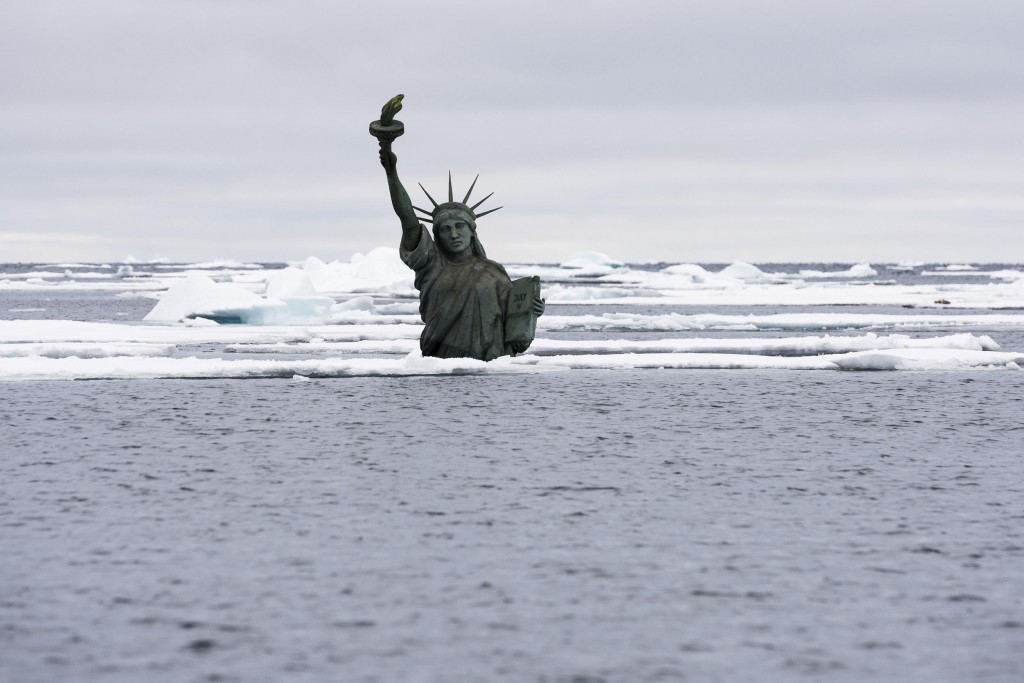
US icon sinking in melting ice? The photo was taken in the Arctic Ocean northwest of Svalbard the 7th of September 2014.
(Christian Auslund / Greenpeace)
To those of us who deal with the Arctic on a regular basis, the significance of the melting ice for the UN climate negotiations and vice versa is abundantly clear. But not everybody understands all the connections. A major media event like this week’s New York climate summit hosted by the UN Secretary General Ban Ki Moon in person was a fine chance to focus attention on the need to protect the Arctic. Greenpeace made good use of it, handing over a petition with six million signatures just ahead of the big event, and with hundreds of thousands gathered in New York for the Climate March.
It was timely in more ways than one, just as the latest sea ice figures were published to confirm the melting trend.
The petition calls for long-term protection of the Arctic, with the region warming more than twice as fast as the global average and opening the high north to shipping and commercial exploitation. Greenpeace and other groups are calling for a ban on oil exploration, which could endanger the fragile ecosystem. Experts also have safety concerns about increased shipping.
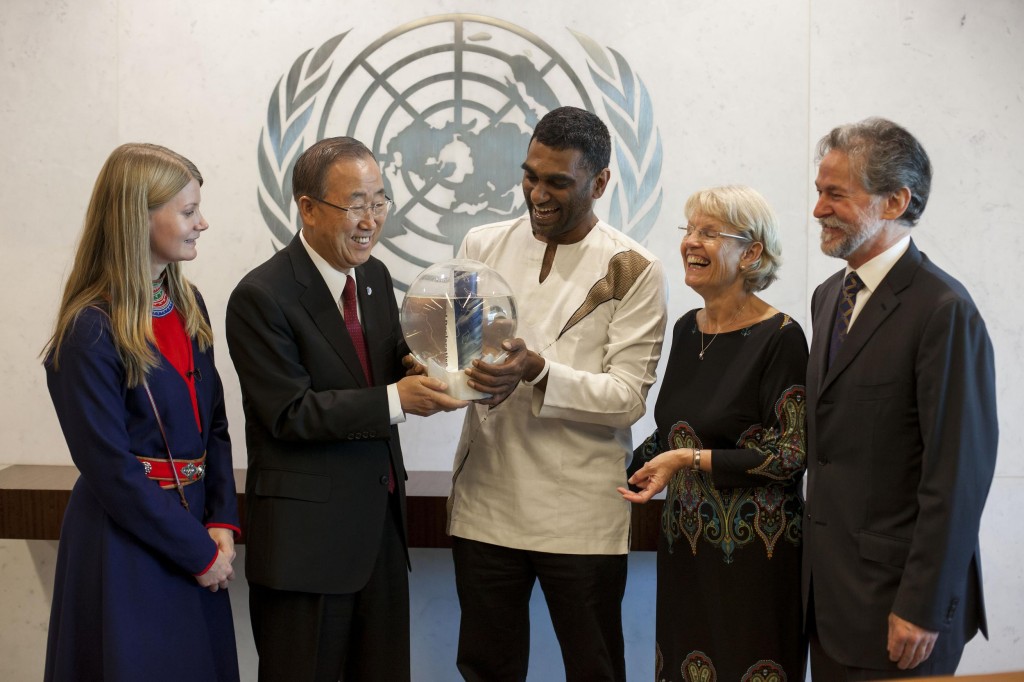
Ban Ki-moon receives the Greenpeace delegation with the petition. The delegation consists of Indigenous rights activist, youth leader and Saami politician Josefina Skerk, Margareta Malmgren-Koller, Greenpeace Senior Political Advisor Neil Hamilton and Greenpeace International Executive Director Kumi Naidoo. Photo: Michael Nagle / Greenpeace
Commercial development versus environment
Earlier this month, a survey showed that 74% of people in 30 countries support the creation of a protected Arctic Sanctuary in the international waters surrounding the North Pole. The study was commissioned by Greenpeace and carried out by Canadian company, RIWI. Around the same time, the Arctic Council, which combines the Arctic states and indigenous peoples’ representatives, currently chaired by Canada, supported the founding of a new business grouping, the Arctic Economic Council. Its aim is to promote the commercial development of the Arctic region. I wrote about this here on the Ice Blog and on the DW website.
Global responsibility for the Arctic
The UN Secretary General accepted the Greenpeace petition saying:
“I receive this as a common commitment toward our common future, protecting our environment, not only in the Arctic, but all over the world.”
Ban Ki-moon said he would consider convening an international summit to discuss the issue of Arctic protection. He also expressed a desire to travel aboard one of the organisation’s campaigning ships in the Arctic in the near future.
Greenpeace Executive Director Kumi Naidoo, who was part of the delegation, said: “The Arctic represents a defining test for those attending the summit in New York”.
He said leaders should bear in mind that concern for the rapid warming of the world was not consistent with planning oil and gas development in the melting Arctic.
The small delegation that met Ban Ki Moon included Indigenous rights activist and Saami politician Josefina Skerk, who last year trekked to the North Pole to declare the top of the world ‘the common heritage of everyone on earth’.
Skerk, a member of the Saami Parliament, said: “We, who want to continue living in the North, are gravely concerned about climate change and the destructive industries that are closing in. My people know and understand the Arctic, and it is changing in a manner, which threatens not just our survival, but the survival of people all over the world.”
Skerk said humans had created the crisis and had to take action to solve it.
“I urge the Arctic countries in particular to take a giant step up and I think the world needs to pay much closer attention to ensure that it happens. They might as well start here in New York.”
From Kiribati to Svalbard and New York
Melting ice especially from the Arctic Greenland ice sheet is raising sea levels around the globe, endangering low-lying areas. At the weekend, the President of Kiribati, Anote Tong, ended a Greenpeace-organized tour of glaciers in Norway’s Svalbard Archipelago. He said the trip to the Arctic ice had made a deep impression on him, which he would share with world leaders at the U.N. climate summit:
“It’s a very fascinating sight. In spite of that, what I feel very deeply is the sense of threat,” Tong said. “If all of that ice would disappear, it would end up eroding our shores.”
Kiribati is a group of 33 coral atolls located about halfway between Hawaii and Australia. Many of its atolls rise just a few feet above sea level.
In last year’s report by the Intergovernmental Panel on Climate Change (IPCC), experts concluded oceans could rise by as much as 1 meter (3.3 feet) by the end of this century if no action is taken to cut the greenhouse gas emissions causing global warming.
“It won’t take a lot of sea level rise to affect our islands,” Tong said. “We are already having problems.”
Sea ice minimum confirms melting trend
The New York summit coincides with the annual announcement of the minimum sea ice for the year, as the summer season comes to an end. The sea ice – in contrast to glaciers on land – does not influence global sea level, but is regarded as a key indicator of how climate change is affecting the region. This year the figure announced by the US National Snow and Ice Data Centre (NSIDC) was 5.01 million square kilometers. The figure is the sixth lowest extent since records began.
The minimum ever recorded at the North Pole was 3.29m sq km in 2012 – and the eight lowest years have been the last eight years.
Ice levels in the Arctic have recovered from their all-time low, but are still on a shrinking trend, said Julienne Stroeve of the National Snow and Ice Data Centre. ”We have been telling this story for a long time, and we are still telling it,” she said.
NSIDC records showed that, this year, ice momentarily dipped below 5million sq km to 4.98m on 16 September, but the official figure is taken from a five day average.
Satellite data shows that one part of the Laptev Sea was completely clear from sea ice for the first time this summer. One of the most important questions for climate scientists is how soon the Arctic will experience its first sea ice-free summer.
Rod Downie, head of WWF UK’s polar programme, said that this year’s new Arctic minimum should prompt new action from the leaders meeting in New York. He stressed the connection between the Arctic and weather conditions in other parts of the world:
“As David Cameron prepares to meet other global leaders at the UN climate change summit in New York, the increased frequency of extreme weather that is predicted for the UK as a result of a warming Arctic should serve as a reminder that we need urgent action now to tackle climate change,” he said.
The summit was a major PR event to draw attention to the need for urgent and substantial climate action. The accompanying protests around the globe show people are not happy with the slow pace of the climate talks and their governments’ efforts to reduce emissions. Of course there was little in the way of concrete pledges. Still, on the whole, I see it as a successful step on the way to a new climate agreement because it has put the spotlight on climate change at a time where international conflicts are dominating the news agenda.
More commentary on the summit from me here:
World leaders must act as climate takes centre stage
All-star gala puts climate back on the agenda
Arctic Economic Council – and the environment?
I would like to share my thoughts with you on the founding meeting of the Arctic Economic Council, taking place in Canada Sept. 2nd and 3rd. Iqaluit, the capital of the northern Canadian territory of Nunavut, is hosting the inaugural meeting of the, group set up to promote commercial development in the Arctic, as climate change makes the region more accessible. It was in Iqaluit that the first-ever ministerial meeting of the Arctic Council (AC) took place back in 1998. The newly established independent Arctic Economic Council (AEC), with close links to the AC, could prove to be equally influential.
Canada currently holds the rotating presidency of the Arctic Council, an organization linking eight Arctic states and six organizations representing Arctic indigenous peoples. Its self-set tasks include sustainable development, monitoring the Arctic environment, identifying pollution risks and environmental emergency preparedness. But in the race to open the Arctic to increased shipping, oil and gas exploration and mining, the formation of the new Arctic Economic Council (AEC) could see commercial interests gaining the upper hand.
Canada puts business first
Leona Aglukkaq, Canada’s Minister for the Environment, the Canadian Northern Economic Development Agency and the Arctic Council, is presiding over the founding meeting of the AEC. Its creation has been a key project during Canada’s 2013-2015 Arctic Council chairmanship, which Aglukkaq has focused on “development for the people of the North.”
“Our government prioritized the creation of the Arctic Economic Council to facilitate business opportunities, trade, investment and growth in the best interests of Northerners,” said Aglukkaq ahead of the two-day meeting. “Establishing this body is an historic moment for the Arctic Council in its efforts to advance sustainable development in the Arctic. I’m confident that the AEC will be a strong and effective body that will help enhance pan-Arctic economic cooperation for the benefit of communities and people in the Arctic.”
An unwise move for the AC?
But some people believe the AC could be making a mistake by allowing a potentially highly influential business group to grow outside of its own structures. Neil Hamilton, Senior Polar Political Advisor at Greenpeace International, told DW: “By creating an independent organization which answers to no one but has the authority to attend, work within, and manipulate the activities of the Arctic Council and its working Groups, the Arctic Council has severely undermined its own mandate.”
The AEC is being established with the contribution of the Arctic Council, but as an independent body. Representatives of both Councils would meet at regular intervals to discuss the economic development of the Arctic.
Originally, the AEC was envisaged as a circumpolar business forum. It’s since turned into a more formal structure. Each of the member states and each of the council’s indigenous permanent participant organizations was invited to send a maximum of three representatives to the inaugural meeting, where they will discuss the organization, structure and objectives of the AEC. The business representatives attending include CEOs and other high-ranking figures from a range of industries including oil and gas exploration, iron mining, tourism and shipping lines.
In the future, membership will not be limited to these nominations and may accept self-nominations from the Arctic business community.
A back-seat for the environment?
Canada says businesses in the Arctic will play a strong role in building a sustainable and economically vibrant future for the region. This will not reassure environment campaigners who have repeatedly attacked the current Canadian administration for its support of environmentally problematic industries such as oil tar sands or fracking, and for its refusal to back international climate agreements. The participation of the Vice-President of Russia’s Rosneft Oil Company Andrey Shishkin will raise eyebrows among those concerned about the possible environmental impact of oil exploration in the High North.
Finland is seeking to chair the AEC, although the group is to be purely business and not government run. In a press release, the country’s Foreign Ministry mentions environment protection but does not appear to give it priority when it outlines the objectives of the new body:
“In the future, the main focus of its work will be on the enhancement of the economic operating conditions of indigenous peoples and Small and Medium Enterprises (SMEs), the reduction of obstacles to trade, the support for sustainable economic operations, and raising of issues the AEC itself considers topical.”
In an AC paper on “facilitating the creation of the Arctic Economic Council,” environmental protection is only listed the last of six objectives, in connection with “maximizing the potential for Arctic economic activities.”
Conservationists are concerned that protecting the environment could take a back seat while companies pressure for fewer restrictions. With the Arctic warming more than twice as fast as the rest of the world and melting ice easing access to northern regions, the pace of Arctic development could outrun efforts to ensure environment protection and safety measures with increasing shipping and the risk of accidents or oil spills.
The World Wildlife Fund, which originally supported the group, told journalists the way it had been set up was “opaque and unaccountable”. WWF said it hat been refused permission to observe the meeting.
Greenpeace Arctic policy advisor Hamilton told DW: “The founding document of the Arctic Economic Council sets the frame for a new era of exploitation of the Arctic, without any indication of intent to protect the environment.” At the same time the Arctic Council, which was established to protect the environment, was “negating its prime function.”
Hamilton called on the Arctic Council to accord civil society the same privilege as it appears to be allowing the new economic group, by loosening regulations on granting the role of observer status.
The two-day meeting in Iqaluit ends on Wednesday, September 3rd. In the coming months, the Arctic Council will have to clarify its relation to the new AEC it helped create, and demonstrate how it’s going to reconcile the increasing pressure for commercial activity with avoiding environmental damage.
Coal, climate, cryosphere
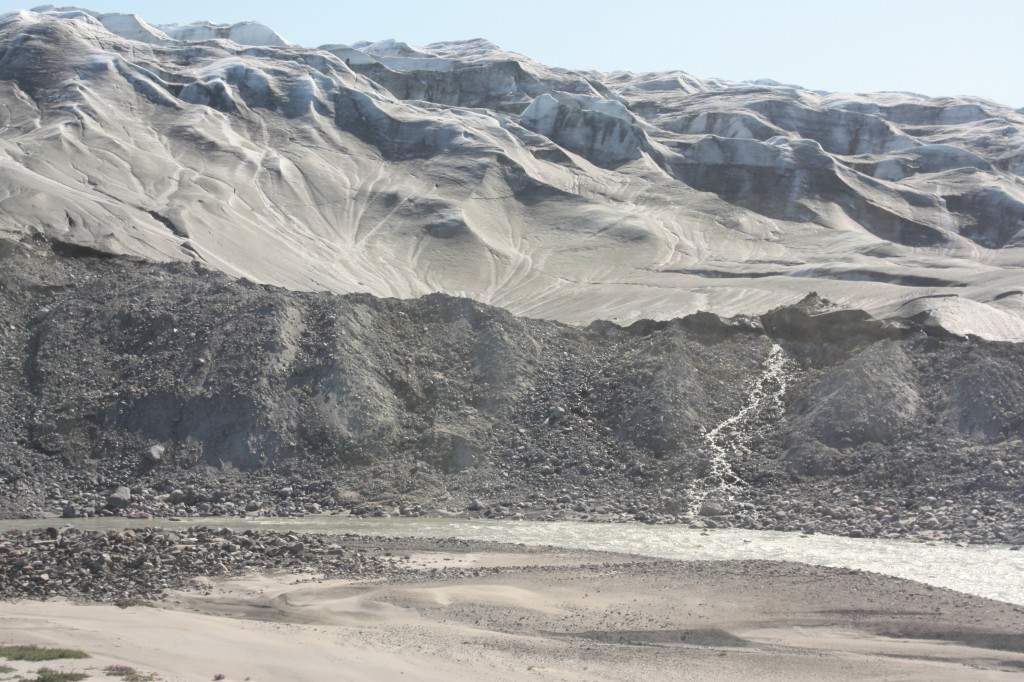
The Greenland ice sheet is melting faster. Scientists also report a decreasing albedo with snow becoming darker. (Pic: I.Quaile)
Fossil fuel power plants are still on the increase – committed carbon emissions are rising fast. At first glance you might respond to that with “so what’s new”? Well, a study is new, which indicates that in spite of all the political rhetoric in a lot of places about switching to renewable energies and moving away from fossil fuels, we are building more fossil fuel power plants than ever before. Unsurprisingly, that is leading to an increase of carbon dioxide emissions, which is bad news for plans to keep global temperature rise below 2°Celsius. It is extremely bad news for those of concerned about the cryosphere and the increasing melt rates of Greenland and parts of Antarctica. The main problem, the authors tell us, is that we have already committed to huge emissions by investing in polluting technologies.
Steven Davis of the University of California, Irvine and Robert Socolow of Princeton University in the US, report in the journal Environmental Research Letters that existing power plants will emit 300 billion tons of additional carbon dioxide into the atmosphere during their lifetimes. In this century alone, emissions from these plants have grown by 4% per year.
The two scientists have already reported on the increasing costs of delay in phasing out fossil fuel sources of energy, notes Tim Radford of the Climate News Network. Thanks again to you people for drawing attention to the study. Their latest research looks at the steady future accumulation of carbon dioxide in the atmosphere from power stations.
“Despite international efforts to reduce CO2 emissions, total remaining commitments in the global power sector have not declined in a single year since 1950 and are in fact growing rapidly,” the report states.
Massive emissions already committed
Governments worldwide have in principle accepted that greenhouse gas emissions should be reduced and average global warming limited to a rise of 2°C.
At the current pace though, scientists have warned that the world is on track for at least 4° Celsius by the end of the century. That could mean drastic rises in sea levels and catastrophic drought in some areas of the world.
“We are flying a plane that is missing a crucial dial on the instrument panel,” said Socolow. The needed dial would report committed emissions. Right now, as far as emissions are concerned, the only dial on our panel tells us about current emissions, not the emissions that capital investment will bring about in future years.”
In the latest study, scientists asked: once a power station is built, how much carbon dioxide will it emit, and for how long? They assumed a functioning lifetime of 40 years for a fossil fuel plant and then tallied the results.
The fossil fuel-burning stations built worldwide in 2012 alone will produce 19 billion tons of carbon dioxide over their lifetimes. The entire world production of the greenhouse gas from all of the world’s working fossil fuel power stations in 2012 was 14 billion tons.
“Far from solving the problem of climate change, we’re investing heavily in technologies that make the problem worse,” the experts stress.
The US and Europe between them account for 20% of committed emissions, but these commitments have been declining in recent years. Facilities in China and India account for 42% and 8% respectively of all committed future emissions, and these are rapidly growing in number. Two-thirds of emissions are from coal-burning stations ad the share from gas-fired stations had risen to 27% by 2012.
Fossil fuel wind-down not fast enough
Davis says more fossil fuel-burning facilities have to be retired than new ones built. “But worldwide we’ve built more coal-burning power plants in the past decade than in any previous decade, and closures of old plants aren’t keeping pace with this expansion”, he added.
According to Socolow, a high-carbon future is being locked in by the world’s capital investments: “current conventions for reporting data and presenting scenarios for future action need to give greater prominence to these investments,” he said.
The current draft of a summary report to the International Panel on Climate Change (IPCC) due to be released in November and viewed by the Times this week, warns of “severe, pervasive and irreversible impacts” unless carbon emissions are brought under control. The IPCC stresses that human-induced climate change will lead to the devastation of homes and property, a scarcity of food and water and human mass migration, as sea levels rise through warming temperatures and – alas – melting ice.
Polar melt confirmed from space
I am disappointed that there was so little mainstream media coverage (please correct me if I am wrong) of a report from a team of scientists from Germany’s Alfred Wegener Institute (AWI) in Bremerhaven who have analysed just over two years of data from the CryoSat-2 satellite. Their conclusion that the Greenland ice sheet and Antarctica’s glaciers are melting at record pace, dumping some 500 cubic kilometers of ice into the oceans every year, twice as much in the case of Greenland and three times as much in the case of Antarctica, by comparison with 2009 – yes, you read right, we are talking about a very short period for such a dramatic increase in ice loss – should have made more news headlines and not just the science pages.
To understand the scale of that, the researchers say it would be the equivalent of an ice sheet that’s 600 meters thick and covers an area as big as the German city of Hamburg – or, my colleagues here at DW calculate, as big as Singapore.
The research team headed by Veit Helm used around two years’ worth of data from the ESA CryoSat-2 satellite to create digital elevation models of Greenland and Antarctica. The results were published in the online magazine of the European Geoscience Union (EGU) The Cryosphere.
“The new elevation maps are snapshots of the current state of the ice sheets,” Helm says. “The elevations are very accurate, to just a few meters in height, and cover close to 16 million square kilometers of the area of the ice sheets.” He says this includes an additional 500,000 square kilometers that weren’t covered in previous elevation models from altimetry.
Space technology shows declining ice mass
Helm and his team analyzed all data from the CryoSat-2 radar altimeter SIRAL in order to come up with the detailed maps. The satellite with this new radar equipment was launched in 2010. Satellite altimeters measure the height of an ice sheet by sending radar or laser pulses which are then reflected by the surface of the glaciers or surrounding areas of water and recorded by the satellite.
The researchers used other satellite data as well to document how elevation has changed between 2011 and 2014.
Rapid ice loss over a short period of time
The team used more than 200 million SIRAL data points for Antarctica and some 14 million data points for Greenland to create the elevation maps. The results show that Greenland alone is losing around 375 cubic kilometers of ice per year.
Compared to data which was collected in 2009, the loss of mass from the Greenland ice sheet has doubled. The rate of ice discharge from the West Antarctic ice sheet tripled during the same period.
I think this is definitely worth talking about. We know the huge implications of polar ice melt for global sea levels. Other research from this year also tells us that, at least in the case of parts of Antarctica, the ice melt is probably irreversible.
We cannot afford to ignore what is happening to the ice sheets. The extent of ice loss in Greenland is particularly dramatic. I am losing patience with those people who respond to studies like this and our reporting on it by saying “but the East Antarctic is gaining volume” and “the Antarctic sea ice has grown”. It is so easy to take things out of context and mix different factors up when trying to understand a very complex system.
I will give the last word here to AWI glaciologist Angelika Humbert, who co-authored the study: “If you combine the two ice sheets (Greenland and Antarctic), they are thinning at a rate of 500 cubic kilometers per year. That is the highest rate observed since altimetry satellite records began about 20 years ago.” It seems to me there is no arguing with that.
Related stories:
Antarctic melt could raise sea levels faster
West Antarctic ice sheet collapse unstoppable
Climate change risk to icy East Antarctica
Antarctic Glacier’s retreat unstoppable



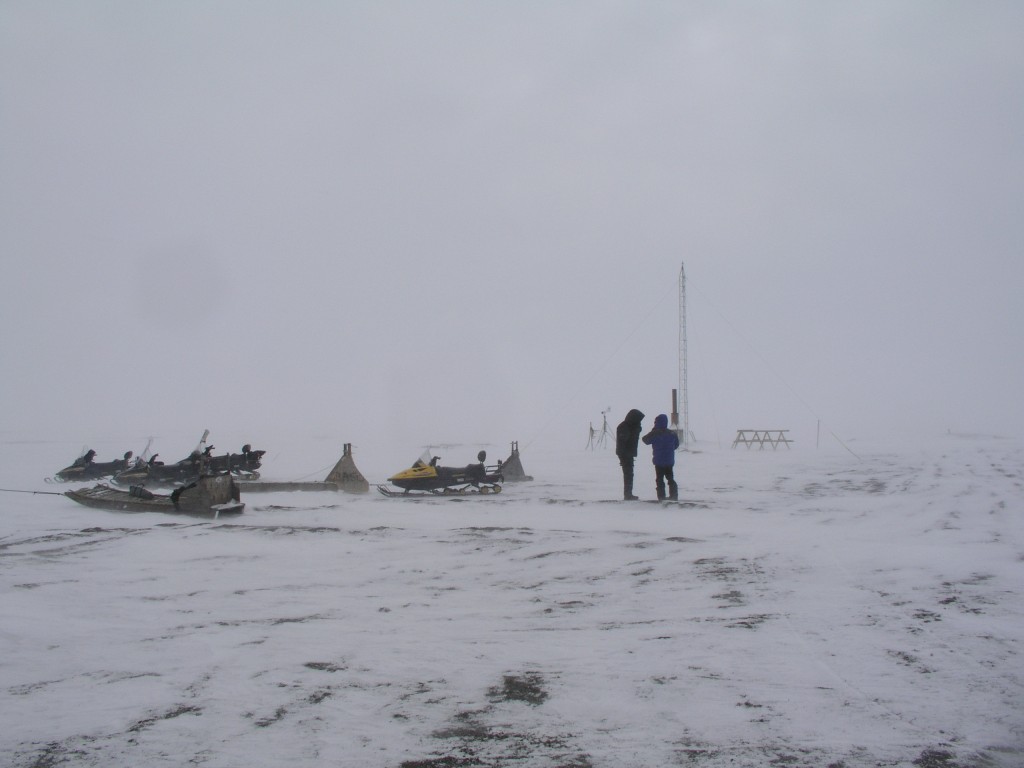

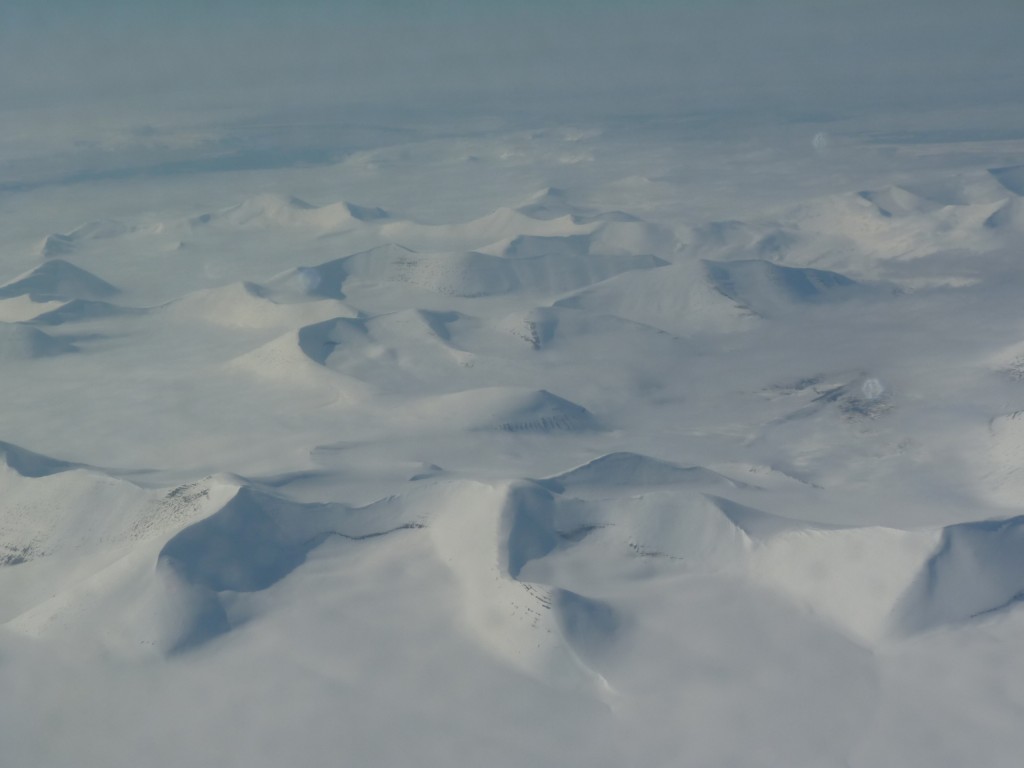
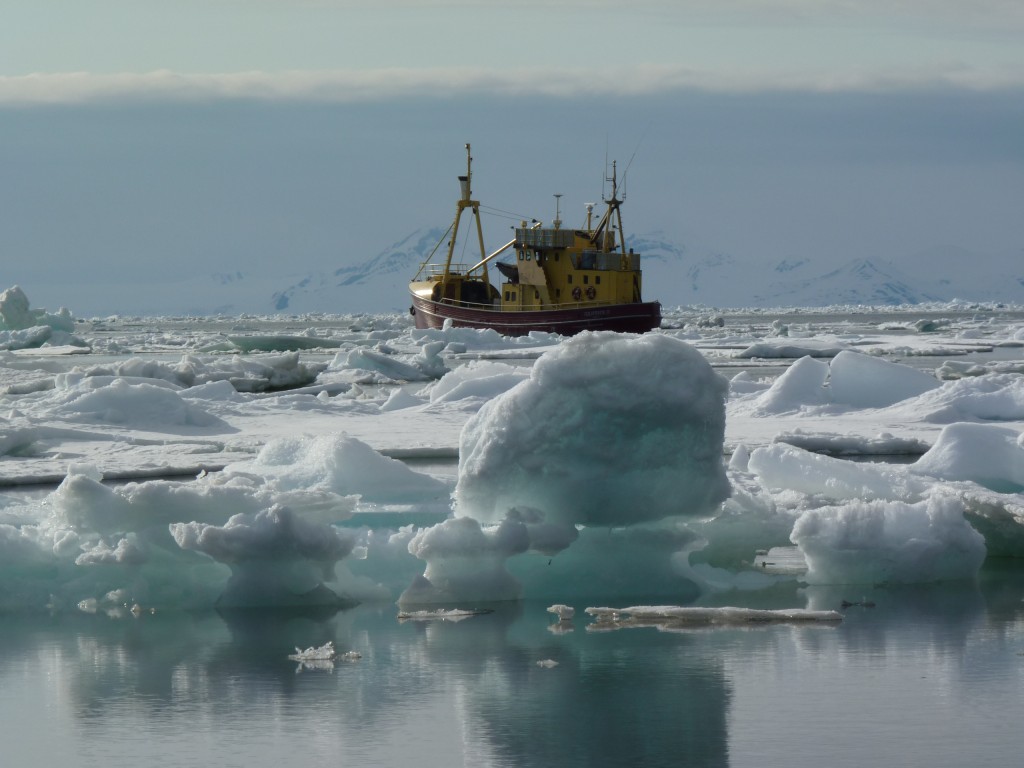
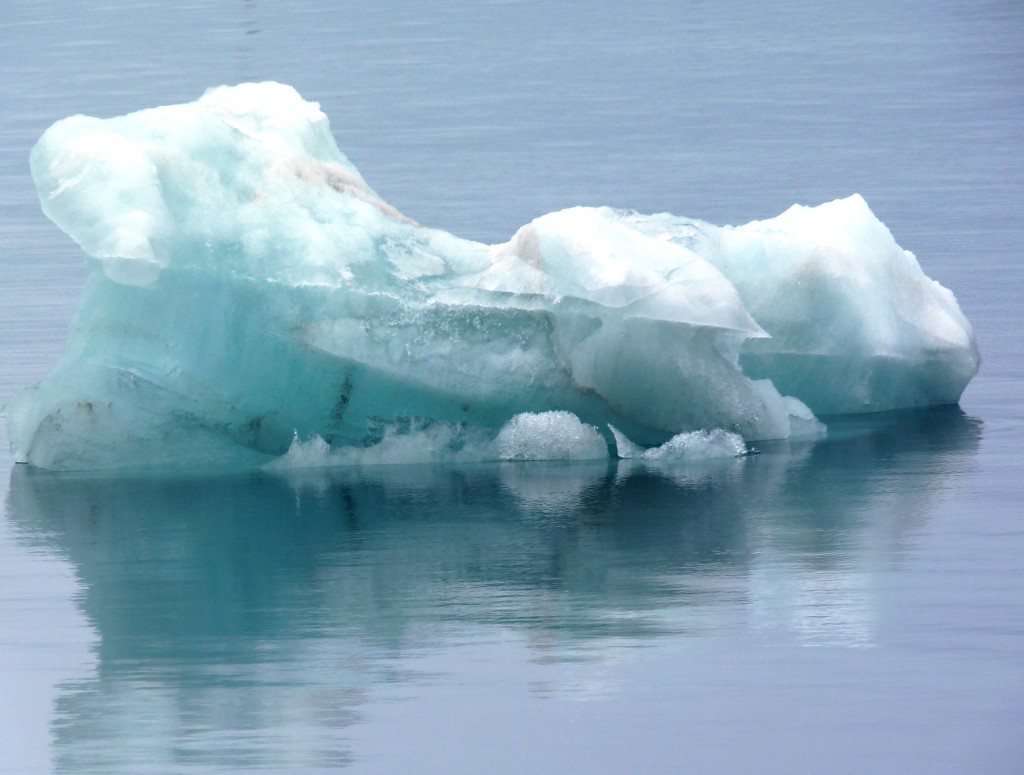
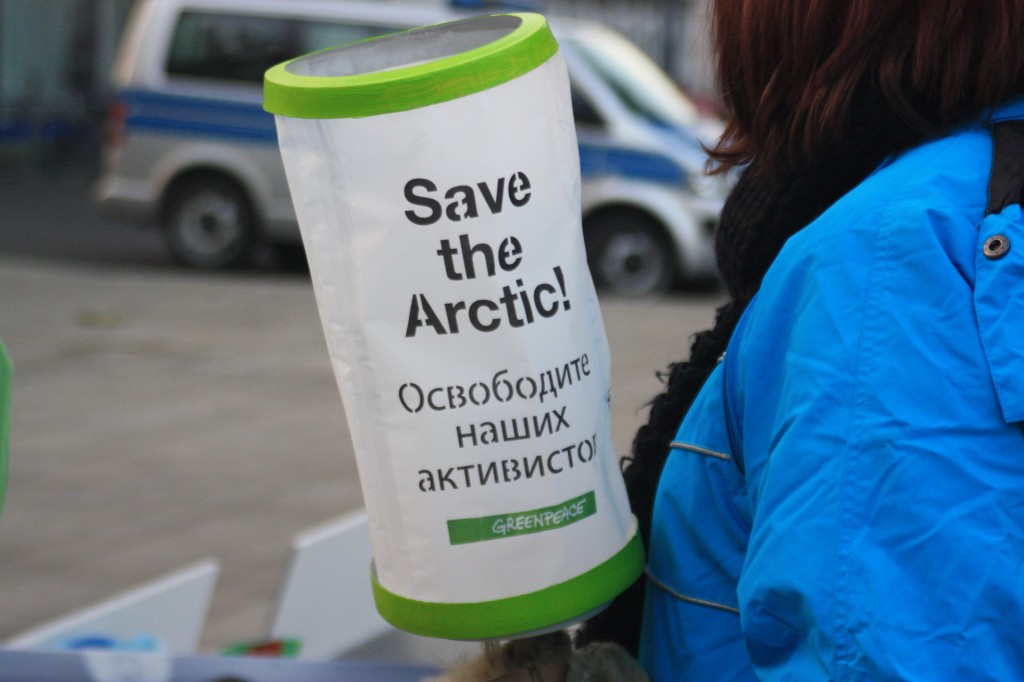
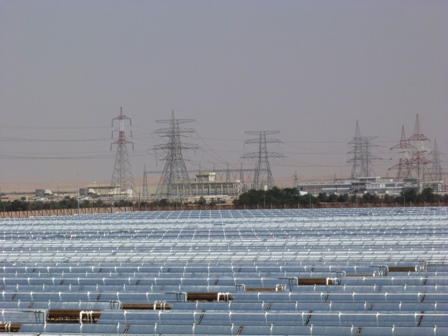
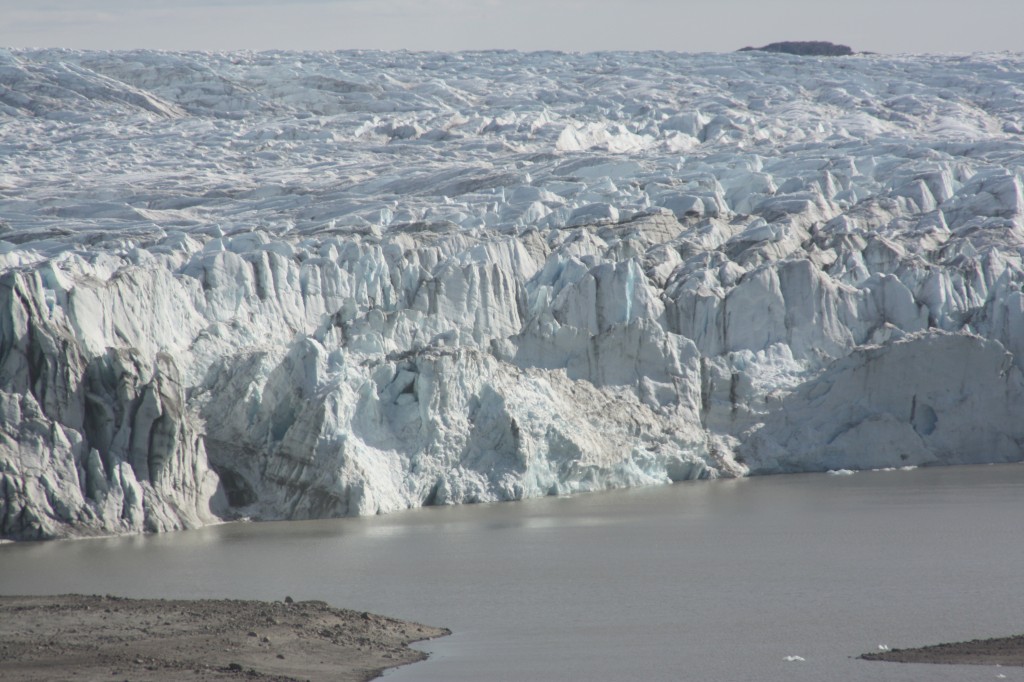
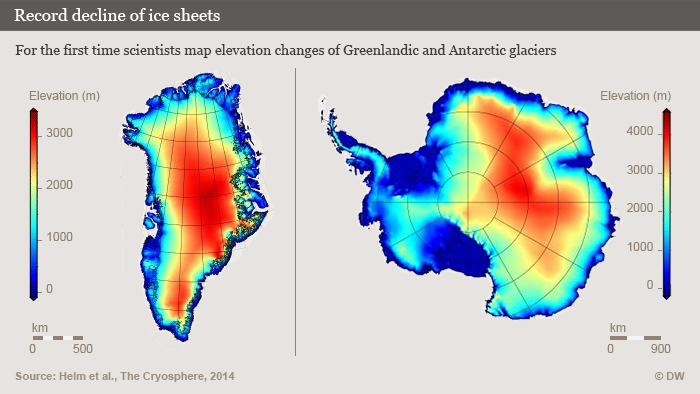
















Feedback